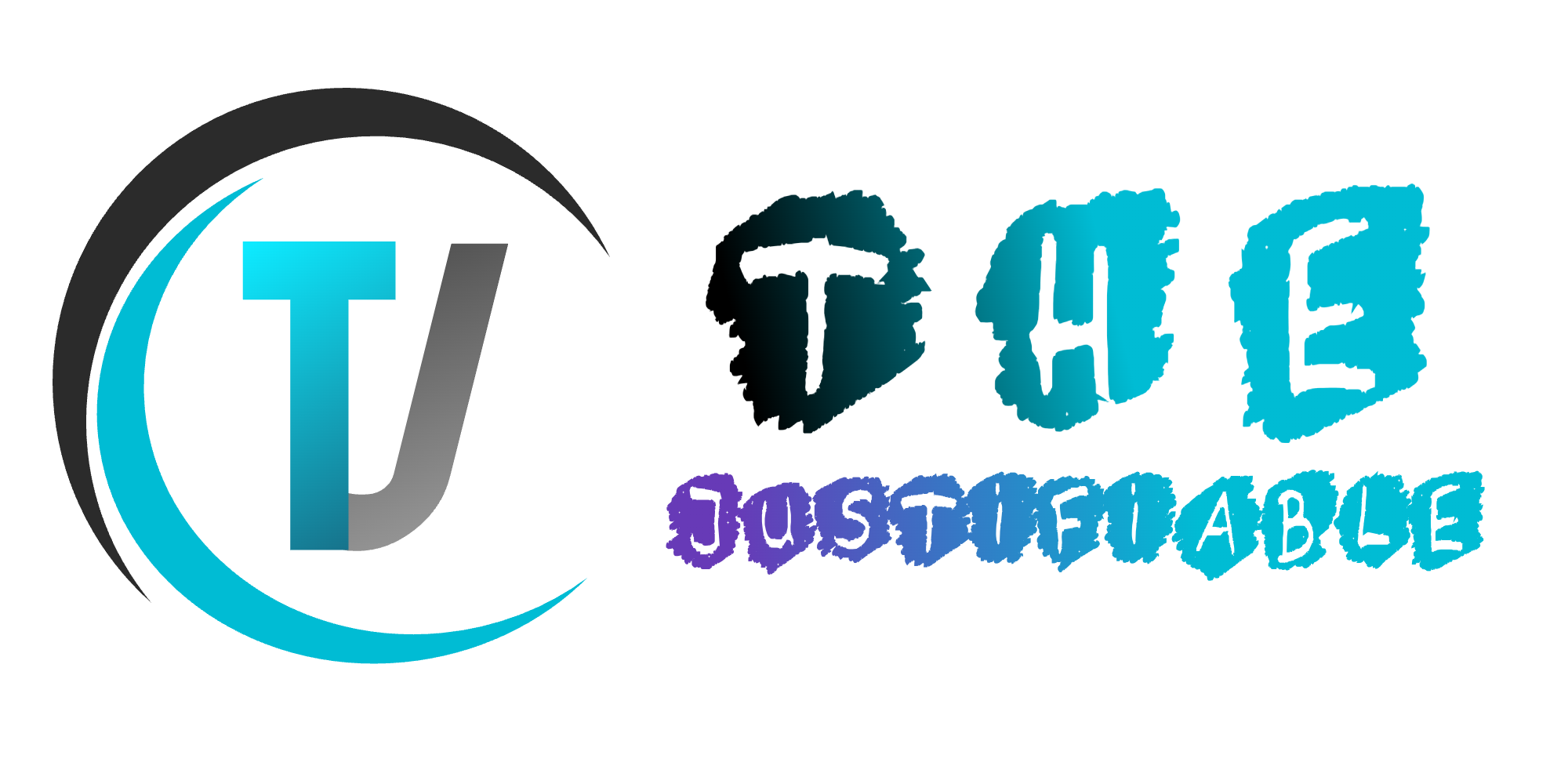Table of Contents
Writing blogs for money sounds simple, but is it really as easy as typing out a few posts and cashing in? Can anyone make a living from blogging, or is it a dream reserved for a few?
This article breaks down the hard truths most people don’t talk about. You’ll learn what it really takes to turn blogging into income, where people go wrong, and the exact steps you can take to make it work.
Why Most People Fail At Writing Blogs For Money
Most new bloggers give up before they even get close to making a steady income. And it’s not because they’re lazy—it’s usually because they walk in with the wrong map.
Let me break down the biggest reasons people fail when writing blogs for money.
Unrealistic Expectations About Quick Income
Here’s the hard truth: blogging is not a “get rich quick” method. It’s more like planting a tree—you won’t see fruit in the first season. Many new bloggers expect results in a few weeks, maybe a couple months, but real income often takes 12–24 months of consistent effort.
I’ve seen people post three articles, throw in some ads, and then wonder why they’re making $0.50 a month. The math doesn’t lie: most display ad networks pay around $10–$20 per 1,000 views. That means unless you’re pulling in tens of thousands of readers, you’re not even covering your coffee habit.
The fix? Set your timeline realistically. Expect slow beginnings, and measure progress not in dollars, but in traffic, email subscribers, and engagement. Those are the signals that money will eventually follow.
Lack Of A Clear Monetization Strategy
Many blogs flop because the owner never decides how the blog will make money. They throw spaghetti at the wall—ads, affiliate links, maybe a half-baked ebook—and nothing sticks.
Here’s a better approach:
- Decide early whether your blog will lean on ads, affiliate income, services, or products.
- Start with one core monetization method instead of trying them all at once.
- Build content intentionally around that model. For example, if you’re doing affiliate marketing, every post should answer a problem and naturally lead readers to a product.
I suggest sketching out your revenue model before you even buy your domain. It will guide your content, branding, and even the niche you choose.
Underestimating The Competition In Every Niche
Pick any topic—fitness, finance, parenting, tech—and you’ll find thousands of established blogs already dominating search results. Too many new bloggers underestimate just how fierce the competition is.
Google doesn’t hand out top rankings like candy. Older blogs have years of backlinks, authority, and trust built up.
To compete, you need to carve out a unique angle. Instead of “fitness tips,” maybe you focus on “fitness tips for people working night shifts.” Specificity shrinks the competition and gives you a better chance to stand out.
Think of it this way: you don’t need to beat everybody. You just need to serve one audience better than anyone else.
Poor Content Quality That Doesn’t Attract Readers
This is the quiet killer of most blogs. If your content is shallow, unhelpful, or just a rehash of what’s already out there, people won’t stay—and they certainly won’t buy.
High-quality blog content should:
- Solve a real problem, not just talk around it.
- Use examples, visuals, and personal insights.
- Be written in a way that makes people feel like you’re speaking directly to them.
I believe content is your only true moat. Ads, plugins, and design don’t matter if your writing doesn’t earn trust. Aim for depth and clarity, not just word count.
What It Really Takes To Build A Profitable Blog
If you want to flip the script and actually succeed, you need a different mindset. Making money from blogging isn’t magic—it’s a combination of time, consistency, and smart strategy.
Consistency And Patience Over Instant Results
The bloggers who make it aren’t necessarily the most talented writers—they’re the ones who stick with it. I’ve seen small blogs outgrow flashy ones simply because the owner kept posting week after week.
Think marathon, not sprint. A single high-quality post per week for a year (that’s 52 solid posts) can outperform 200 rushed articles written in a month. Consistency builds trust with readers and signals to Google that you’re serious.
Choosing A Profitable Niche With Long-Term Demand
Not all niches are created equal. Some simply don’t have much money flowing through them. For example, “DIY crafts with recycled paper” might bring in traffic, but good luck finding lucrative affiliate offers.
Instead, look for niches with:
- High advertiser demand (finance, health, business, tech).
- Evergreen interest (topics people will still search in 5 years).
- Monetizable products or services (courses, coaching, software, gear).
I suggest making a list of your interests, then checking if people are already spending money there.
Tools like keyword research planners can show search volume, but your gut check matters too—ask, “Would I pay money for solutions in this space?”
Building Authority Through High-Value Content
Authority isn’t just a buzzword—it’s the reason people trust your advice enough to click links and buy products. You build authority by being useful, transparent, and detailed.
Here’s how:
- Write guides that are 10x better than what’s already ranking.
- Share personal experiences, even mistakes, so readers know you’ve been in their shoes.
- Use data, charts, and screenshots to add weight to your insights.
Authority compounds over time. Once readers start bookmarking your posts and coming back, your blog transforms from “just another site” into a trusted brand.
Creating A Strong Content And SEO Strategy
Great writing alone won’t get seen—you need search engine visibility. SEO (search engine optimization) isn’t about gaming the system, it’s about creating content people are actually searching for.
A strong SEO strategy includes:
- Keyword research to find what your audience actually types into Google.
- Optimizing on-page elements like headlines, URLs, and internal links.
- Building backlinks by networking with other bloggers, guest posting, or creating standout resources.
I recommend starting with a small cluster strategy. Pick one topic, write 8–10 posts that cover it from different angles, and interlink them.
This makes Google see you as an expert in that niche faster than spreading yourself too thin.
Different Ways To Make Money Blogging
Once you’ve built a foundation, you can actually start monetizing. There are multiple paths, and the best one depends on your niche, audience, and strengths.
Display Ads And Why They Require High Traffic
Ads are the first thing new bloggers try, but they only pay well with high traffic. For context, basic networks like Google AdSense pay peanuts—maybe $2–$5 per 1,000 views. Premium ad networks (Mediavine, AdThrive) pay better, but require 50,000–100,000 monthly visits to qualify.
That means ads work best when your site has massive reach. If you’re still under 10,000 visits a month, don’t expect ads to cover rent.
Affiliate Marketing And Building Trust With Readers
Affiliate marketing is one of the most powerful income streams for bloggers—if done right. It’s not about spamming links, it’s about recommending tools or products that genuinely solve your reader’s problem.
For example, a blogger in the productivity niche might write a tutorial on “How I Organize My Workflow” and naturally recommend a project management tool they use, linking to it with an affiliate code. Readers get value, the blogger earns commission, and everyone wins.
The golden rule? Only promote products you trust. Readers can smell fake recommendations a mile away, and one broken trust can ruin your reputation.
Offering Digital Products Like Courses Or Ebooks
Creating your own product is the most scalable way to earn. You write once, sell forever. Digital products can be:
- Ebooks
- Online courses
- Paid newsletters
- Templates or toolkits
I advise starting with a simple ebook or paid guide. Once you see what sells, you can expand into courses. The advantage here is you’re not relying on someone else’s product—you control the margins.
Services And Consulting As A Blog Extension
If you want faster income, services are the quickest route. Your blog acts as a portfolio and lead magnet. If you blog about social media strategy, you can offer consulting, audits, or even done-for-you packages.
I’ve seen new bloggers land $1,000+ consulting clients with just 5–10 blog posts that show expertise. Services are a great way to bridge the gap until your passive income streams grow.
Sponsorships And Brand Collaborations
Once your blog has an engaged audience, brands may pay you for sponsored posts, reviews, or collaborations. Rates vary widely—anywhere from $100 for a small blog post mention to thousands for bigger deals.
The catch? Brands want engagement, not just traffic. Even a small blog with 5,000 loyal readers can attract sponsorships if those readers actively comment, share, and buy.
Essential Skills Needed To Earn From Blogging
Blogging isn’t just about typing words on a page—it’s a mix of creativity, marketing, and strategy. To make blogging pay, you’ll need to build a toolkit of skills that go beyond writing.
Writing Compelling Content Readers Actually Want
At its core, blogging is about serving readers. If your posts don’t answer their questions or inspire them to take action, they’ll bounce and never return.
Here’s what I’ve learned works best:
- Write with empathy—imagine the exact person you’re helping.
- Keep sentences short, simple, and clear. Think conversation, not lecture.
- Use storytelling sparingly to keep content engaging, but never at the expense of clarity.
For example, when I write a tutorial, I don’t just explain the “what.” I show the “how,” often with steps. Instead of saying “optimize your blog speed,” I’d say, “In WordPress, go to Plugins > Add New and install WP Rocket—it cuts load times dramatically.” That kind of specificity builds trust.
SEO Knowledge To Drive Free And Targeted Traffic
Search engine optimization sounds technical, but it’s really about matching what you write to what people search. Without SEO, even brilliant content may never be seen.
Key SEO skills include:
- Keyword research: finding phrases people actually type into Google.
- On-page SEO: structuring posts with clear headlines, optimized URLs, and internal links.
- Content clustering: grouping posts around a core topic so search engines see you as an expert.
I always advise starting small. Pick one cluster (say “budget travel”) and write a series of posts—“budget travel hacks,” “packing light tips,” “best budget airlines.” Then interlink them. Google rewards this organized depth far more than scattered topics.
Email Marketing To Build An Engaged Audience
If search engines or social media vanish tomorrow, email is the one channel you still control. That’s why every serious blogger builds an email list.
Think of it like this: your blog attracts people, but your email list keeps them. With tools like Aweber or MailerLite, you can create sign-up forms right in your blog posts. Offer a simple lead magnet—maybe a free checklist or mini-guide—to encourage sign-ups.
I suggest treating your email list like friends, not customers. Send helpful tips, personal updates, and only occasionally promote. People stick around when they feel valued, not sold to.
Social Media Promotion For Faster Growth
Social media isn’t just about posting links—it’s about community. Different platforms serve different purposes:
- Twitter/X for thought-sharing and quick conversations.
- Instagram for visual niches like food, fashion, or travel.
- LinkedIn for B2B or professional blogging.
- Pinterest as a surprisingly strong traffic driver for evergreen guides.
One strategy that works: repurpose your blog posts into bite-sized content. A list of “5 productivity hacks” can become five LinkedIn posts, one infographic, and several tweets. You don’t need to reinvent the wheel each time—you just package it differently.
Data Analysis To Understand What’s Working
Numbers may not feel creative, but they tell you exactly what to double down on. Free tools like Google Analytics show you:
- Which blog posts get the most traffic.
- How long readers stay.
- Where people drop off.
I suggest checking your analytics weekly. If one post is getting way more traffic than others, ask: can I expand this? Can I link it to a related product or create a follow-up post? Data helps you stop guessing and start optimizing.
The Time And Effort Most Bloggers Don’t Acknowledge
Here’s the part few people talk about: blogging takes more time, more work, and more patience than most expect. You’re not just writing—you’re editing, promoting, learning, and testing constantly.
Why It Can Take Years To See Steady Income
Many blogs don’t make serious money until 18–24 months in. Why? Because it takes time to:
- Build enough content to be found.
- Gain backlinks and domain authority.
- Grow an email list or loyal readership.
I compare it to pushing a boulder uphill. At first, progress feels painfully slow. But once momentum builds, the boulder starts rolling faster—and that’s when income compounds.
Balancing Content Creation With Promotion
Writing is only half the job. Promotion often takes just as much time. Here’s a rough split that works for me:
- 50% writing and editing.
- 30% promotion (social, outreach, SEO work).
- 20% admin and monetization (emails, offers, products).
If you only create but never promote, your content stays invisible. If you only promote but never create, you run out of substance. The sweet spot is balancing both.
Handling Burnout And Staying Motivated
Burnout is real. Blogging can feel lonely, especially when results are slow. What helps:
- Setting a realistic publishing schedule. One great post a week beats three rushed ones.
- Joining blogger communities for support.
- Taking breaks without guilt—burnout kills blogs faster than slow growth ever will.
I’ve had weeks where I wanted to quit. What kept me going was remembering why I started—to help others solve problems and, eventually, to build freedom for myself. Reconnecting to that “why” is a powerful burnout cure.
Treating Blogging As A Real Business
If you treat blogging like a hobby, it’ll pay like a hobby. The shift happens when you start seeing it as a business. That means:
- Tracking income and expenses.
- Setting quarterly goals.
- Investing in tools (like SEO software, email platforms, or hosting) instead of only chasing free hacks.
Think of your blog as a tiny startup. Even if it’s just you, you’re CEO, marketer, writer, and strategist all rolled into one.
Proven Steps To Start Writing Blogs For Money
Now that you know the skills and effort involved, let’s get tactical. Here’s a step-by-step approach I’d recommend if you’re serious about writing blogs for money.
Define Your Audience And Their Real Problems
Start with people, not posts. Who are you writing for? What do they struggle with? For example, instead of saying “I want to blog about cooking,” narrow it down: “I want to help busy parents cook healthy dinners in under 30 minutes.”
An easy exercise: write down one imaginary reader profile. Name them, give them an age, a job, and a daily struggle. Write every post as if you’re speaking directly to that one person.
Research And Select A Profitable Niche
Passion is important, but profitability matters too. Ask yourself:
- Are there affiliate programs, products, or services in this niche?
- Do advertisers pay high rates for keywords here?
- Is the audience big enough to sustain long-term growth?
If you’re torn, list out your top 3 interests, then run some basic keyword checks. Look at average monthly search volume and CPC (cost per click). If “personal finance” shows a $15 CPC and “pet crafts” shows $0.20, that’s a clue about where money flows.
Create A Content Calendar That Builds Authority
Consistency is easier when you plan ahead. A content calendar helps you avoid the “what should I write today?” trap.
Here’s a simple setup:
- Choose 3–4 core topics within your niche.
- Write 2–3 posts under each topic.
- Interlink those posts to build topical authority.
For example, in a fitness niche, your clusters might be “home workouts,” “nutrition,” and “recovery.” Each cluster becomes a content pillar that signals authority to readers and search engines.
Monetize Strategically Instead Of Randomly
Don’t slap ads on your blog on day one—it cheapens your site and barely pays. Instead, monetize in stages:
- Build traffic and an email list first.
- Add affiliate links where relevant.
- Introduce your own product or service once you know what readers want.
- Layer in ads or sponsorships when traffic is steady.
This phased approach prevents you from overwhelming readers with random monetization attempts that don’t convert.
Track Results And Optimize What Brings Income
The best bloggers don’t just create—they measure. I recommend setting up:
- Google Analytics for traffic.
- Search Console for keyword performance.
- A simple spreadsheet for income streams.
Once a month, review what’s working. If a single affiliate post is earning most of your income, write more around that topic. If a product isn’t selling, either improve the pitch or drop it. Optimization is where growth accelerates.
Pro tip: Don’t wait until your blog is “perfect” to start. I’ve seen people stall for months trying to design the perfect logo or theme. Focus on content first—the rest can evolve.
Common Myths About Writing Blogs For Money
There’s a lot of noise out there about blogging. Some of it is wishful thinking, and some of it is flat-out wrong. Believing these myths is one of the fastest ways to set yourself up for disappointment.
Believing Blogging Is Passive Income
Blogging gets advertised as “passive income” all the time. Here’s the reality: it’s not passive in the beginning. It’s very active. You’ll be writing, editing, promoting, optimizing, and repeating.
True passive income happens later—when old posts keep ranking, affiliate links keep converting, and digital products keep selling without extra effort. But even then, you still need to update content, refresh SEO, and nurture your audience.
It’s more like a garden: yes, you’ll eventually harvest without planting new seeds every day, but you’ll still need to water and weed.
Thinking Viral Content Guarantees Success
I’ve seen bloggers chase the dream of a viral post, thinking it’ll catapult them into financial freedom. Sometimes a post does go viral, but here’s the problem: viral traffic doesn’t always convert.
For example, a funny story about a travel mishap might get a million views. But if your monetization strategy is affiliate links for luggage, only a tiny fraction of readers may care enough to buy.
Viral traffic is like a sugar rush—it feels great, but it fades fast. Consistent, targeted traffic from search engines or email lists is far more reliable for long-term income.
Assuming More Posts Equal More Money
Quantity doesn’t guarantee success. A blog with 50 well-written, SEO-optimized posts can outperform a blog with 500 rushed ones. I’d take one in-depth guide that ranks and converts over ten surface-level posts any day.
Think of your blog as a library. Do you want hundreds of flimsy pamphlets, or a smaller collection of go-to books people return to? Readers and Google both reward quality over volume.
Relying On One Income Stream Alone
Another myth is that you can “just put ads” or “just do affiliates” and call it a day. But online income is fickle. Ad networks change policies. Affiliate programs cut commissions. Algorithms shift.
The most successful bloggers diversify. Maybe it’s a mix of affiliate marketing, digital products, services, and sponsorships. If one stream dries up, the others keep you afloat. Think of it as financial insurance for your blog.
Expert Tips To Make Blogging Work Long Term
Longevity is where real income comes from. Many blogs fizzle after a year, but if you want to make this work, you need to play the long game with smart strategies.
Diversify Income To Protect Your Blog’s Earnings
I recommend building at least two to three income streams. For example:
- Use affiliate marketing for steady commissions.
- Add digital products like an ebook or course for higher margins.
- Layer in ads or sponsorships once you hit higher traffic.
This way, if Amazon slashes affiliate rates (which they’ve done multiple times), your entire income doesn’t vanish overnight.
Build A Loyal Community Instead Of Just Traffic
Traffic is great, but loyalty is priceless. A loyal reader will open every email, share your posts, and buy your products. Loyalty comes from trust, and trust comes from honesty and consistency.
I suggest engaging with readers directly. Reply to comments, answer emails, even share behind-the-scenes updates in your newsletter. When people feel like they know you, they stick around.
Invest In Tools That Save Time And Increase Reach
At some point, free hacks stop cutting it. The right tools pay for themselves in saved time and better results. For example:
- SEO tools (like Ahrefs or SEMrush) show you keyword opportunities.
- Email platforms (like Moosend) let you automate sequences
- Scheduling tools (like Sproutsocial) save hours on social media promotion.
If you’re serious, treat tools as investments, not costs.
Keep Updating Content To Stay Relevant
Google loves fresh content, and readers do too. I advise revisiting old posts every few months:
- Update outdated stats.
- Add new insights or examples.
- Improve formatting for readability.
This not only improves rankings but also shows readers you’re current and reliable. A blog post is a living asset—it grows in value the more you maintain it.
When Blogging May Not Be The Right Fit For You
Blogging isn’t for everyone, and that’s okay. It’s better to be honest upfront than waste years forcing something that doesn’t suit you.
If You Struggle With Long-Term Commitment
Blogging is a marathon. If you find it hard to stick with projects that take months (sometimes years) before payoff, you’ll likely get frustrated. It’s not a quick flip—it’s a slow build.
If You Expect Fast Results Without Work
If you’re hoping to publish a handful of posts and watch the money roll in, you’ll be disappointed. Blogging takes sustained effort—writing, promoting, and refining. If instant gratification is your style, this won’t fit.
If You Avoid Learning New Skills
Blogging isn’t just writing. You’ll need to learn SEO, email marketing, analytics, maybe even a little design. If the idea of learning new skills makes you groan, this might not be the right path.
If You’re Not Ready To Treat It Like A Business
If blogging stays a “side hobby,” income will reflect that. Serious blogs require planning, investment, and structure. If you’re not willing to track progress, spend on hosting/tools, or treat readers like customers, monetization will be tough.
Final Truth: How To Make Blogging Truly Pay Off
So, how do you make blogging for money actually work? Here’s the truth most people avoid—it’s not easy, but it’s absolutely possible with the right mindset and strategy.
Focus On Readers First, Money Second
Every successful blogger I know says the same thing: when you help people, the money follows. If you prioritize serving readers—solving their problems, making their lives easier—income is the byproduct.
Play The Long Game And Build Sustainable Growth
Short-term hacks and tricks might bring temporary results, but sustainable growth comes from steady, consistent work. Publishing high-quality posts, building authority, and growing an email list takes time, but it compounds like interest.
Keep Testing And Adjusting Your Strategy
What works today might not work tomorrow. Algorithms change, trends shift. The bloggers who thrive are the ones who experiment. Try new post formats, test monetization methods, and adjust based on data, not just gut feeling.
Think Beyond Blogging And Build A Personal Brand
Your blog is one platform—but your personal brand is bigger. Maybe it leads to speaking gigs, book deals, or partnerships.
Maybe you expand into YouTube, podcasts, or courses. Blogging is the foundation, but your brand is the real long-term asset.
Pro tip: The real payoff from writing blogs for money comes when you stop chasing shortcuts and start treating it like a craft. When you care more about helping readers than hitting a dollar target, the income becomes not just possible—but inevitable.






